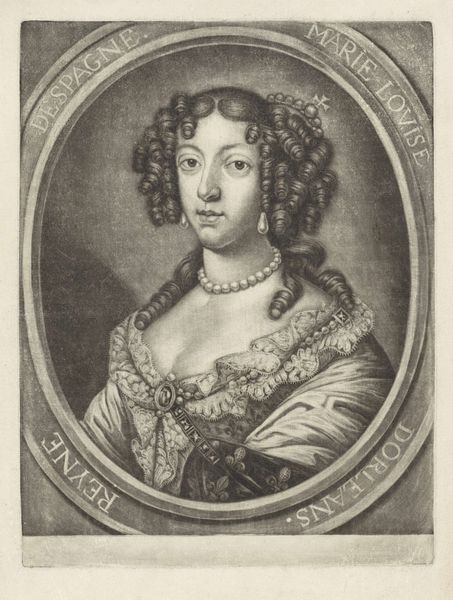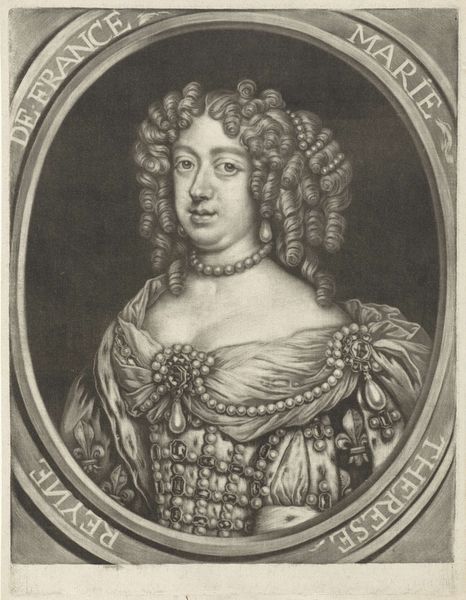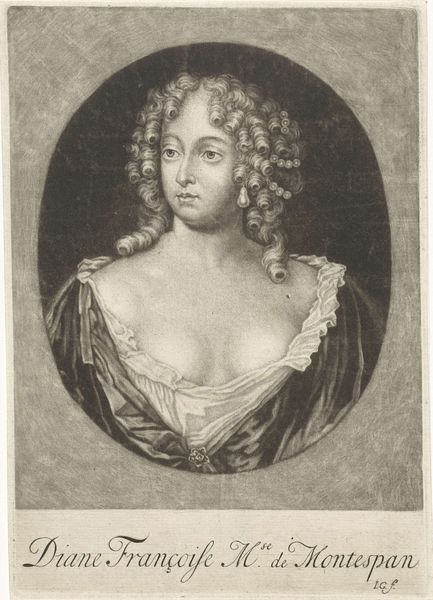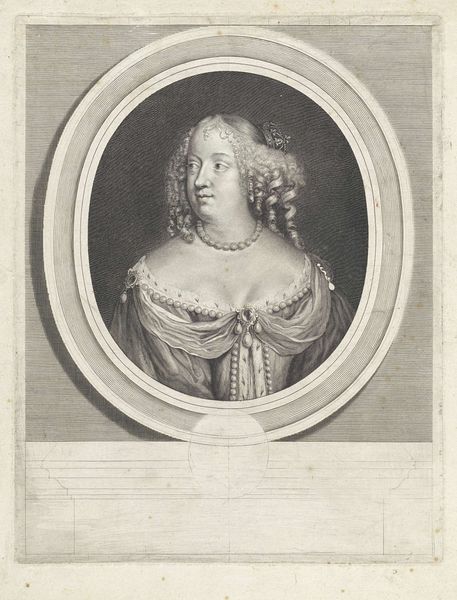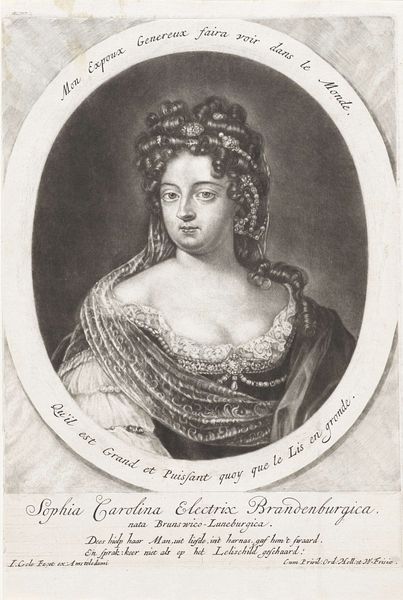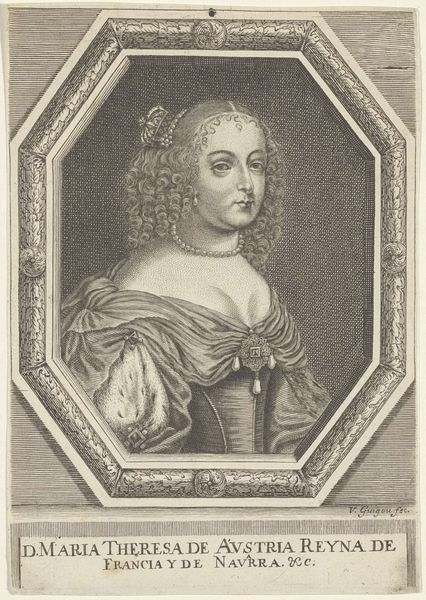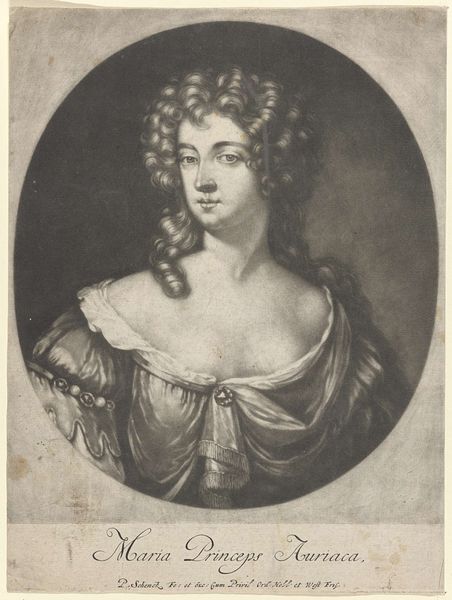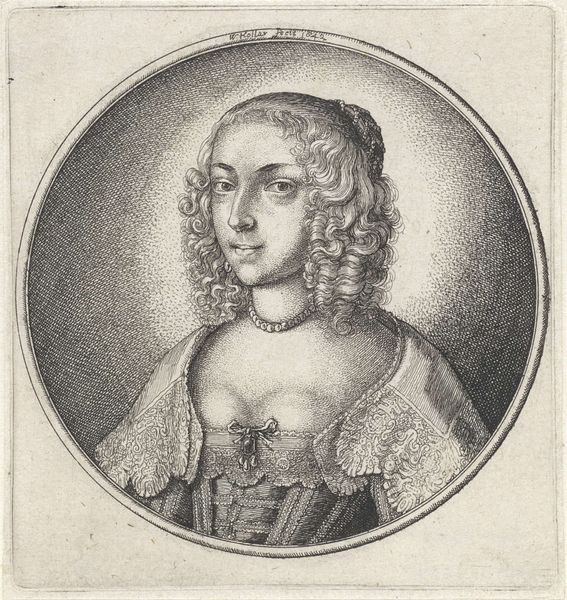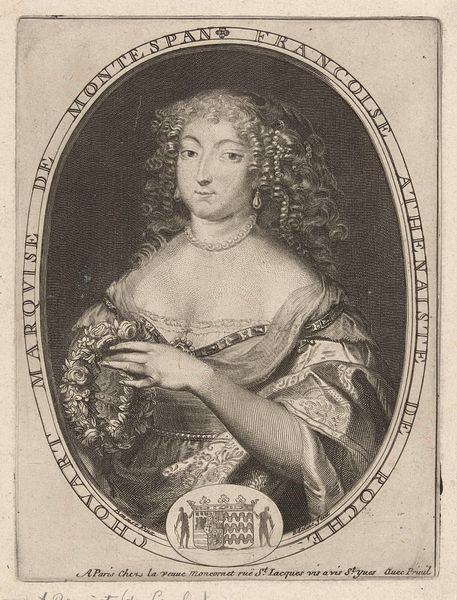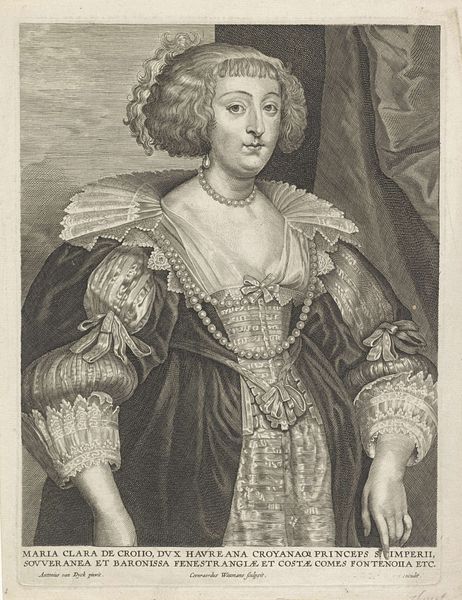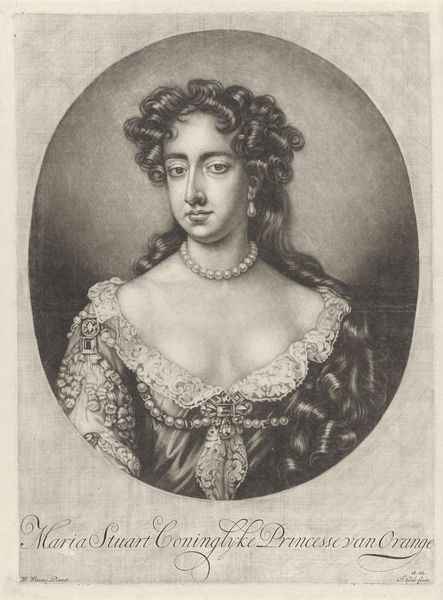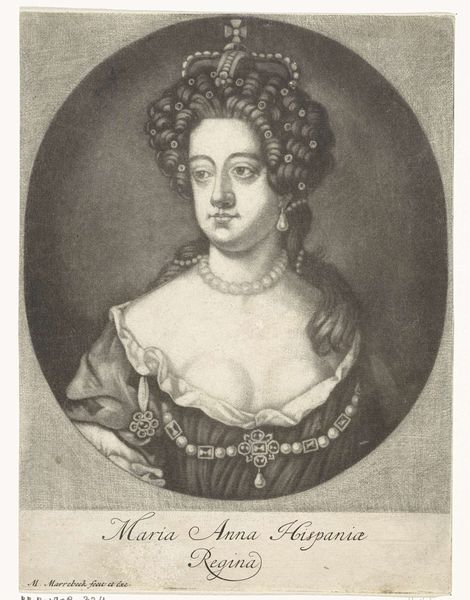
print, engraving
#
portrait
#
baroque
# print
#
old engraving style
#
engraving
Dimensions: height 195 mm, width 135 mm
Copyright: Rijks Museum: Open Domain
Editor: This is a print titled "Portret van Eleonore Magdalene Therese van Palts-Neuburg," created between 1676 and 1724 by Jacob Gole. It's an engraving and it has this really delicate, old-fashioned feel. What stands out to you? Curator: The labor invested in this engraving is substantial. Consider the social context: prints like this played a crucial role in disseminating images of power. Who controlled the production and distribution of these images, and what kind of workshop environment did Gole operate within? We often overlook the means of production, yet the engraver's skill, time, and the very materials themselves—the copper plate, the ink, the paper—all contribute to the final product and its impact. Editor: That’s interesting. I was focused on her regal appearance. Did the material used affect how she was perceived? Curator: Absolutely. The choice of engraving, a relatively reproducible medium, speaks volumes about the intent to circulate this image widely. Was this meant to solidify her image within the Holy Roman Empire? How does the seemingly 'delicate' nature of the engraving, as you say, juxtapose with the immense power it signifies? Was it challenging the tradition boundaries between the upper class and labor? Editor: So, it’s less about just the ‘what’ of the image and more about ‘how’ it was made and shared that gives it meaning? Curator: Precisely. By exploring the material processes and social context, we understand its true impact on both her political visibility and the understanding of this era. Editor: I’ve never really thought about prints like this as products of labour before. I guess thinking about process opens a lot of new doors for interpretation! Curator: Indeed! Analyzing art through the lens of materials and production unveils often-overlooked dimensions.
Comments
No comments
Be the first to comment and join the conversation on the ultimate creative platform.
